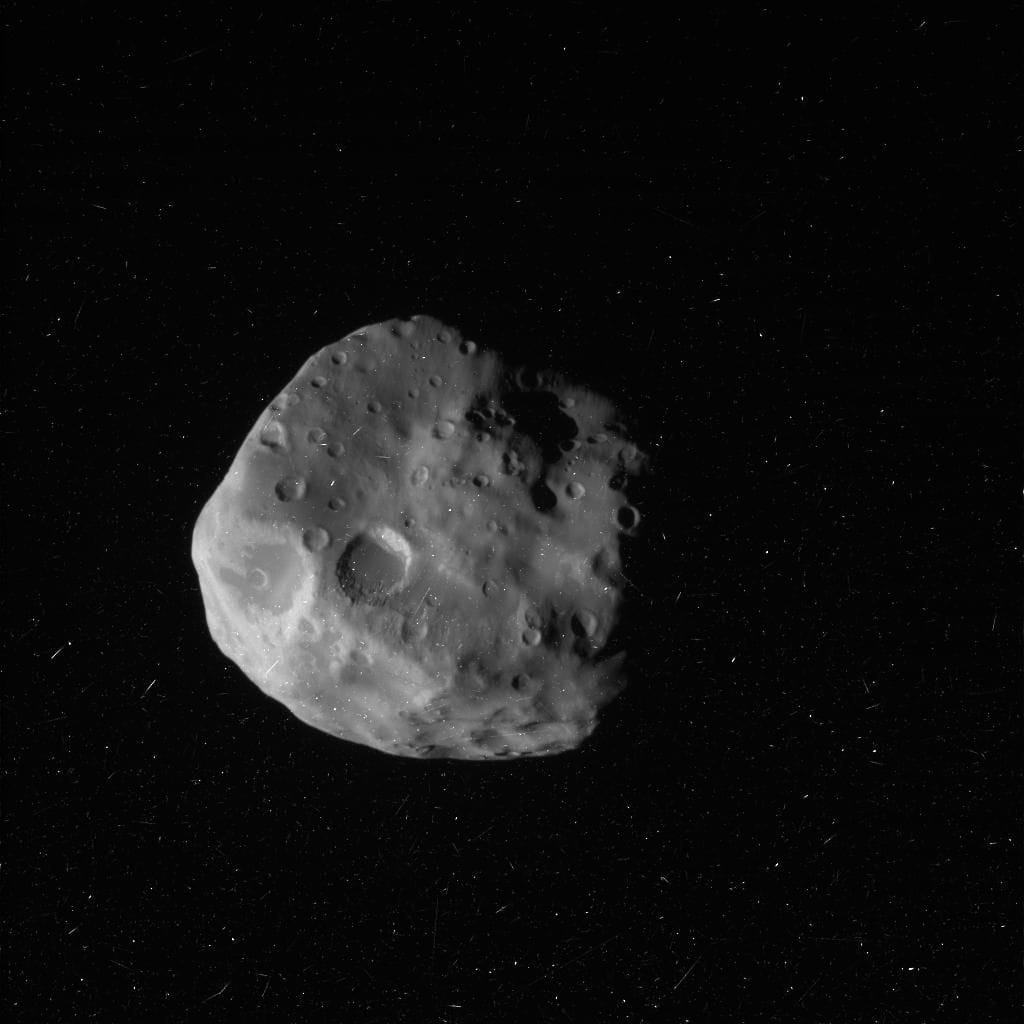Jupiter’s Moons: Echoes of Ancient Muses
Have you ever gazed at the night sky and wondered about the stories behind the celestial bodies? Our solar system is a treasure trove of such tales, and Jupiter’s moons offer some of the most captivating narratives. Let’s embark on a journey to explore two of these moons, Thelxinoe and Mneme, named after the inspiring Muses of Greek mythology.
The Muses were goddesses who personified creativity and artistic passion in ancient Greece. Now, their names grace two of Jupiter’s many moons, bridging ancient myth with modern scientific discovery. Thelxinoe, discovered in 2003, is named after the Muse of enchantment, embodying captivating and mesmerizing ideas. While not as widely recognized as some of her sister Muses, Thelxinoe’s association with captivating ideas aligns perfectly with the mysterious allure of a distant moon. Much about this small satellite remains shrouded in mystery, with ongoing research gradually unveiling its secrets.
Mneme, another Jovian moon, honors the Muse of Memory, the keeper of stories and experiences. This moon, even smaller than Earth’s moon, follows a peculiar retrograde orbit around Jupiter, traveling in the opposite direction of the planet’s rotation. This unusual motion adds to its mystique, much like the way memories can transport us back in time. Just as Mneme the Muse helped preserve the past, Mneme the moon symbolizes the rich history embedded within our solar system.
These moons raise intriguing questions. What other celestial bodies bear connections to ancient myths? How does exploring these connections enhance our understanding of both the cosmos and the narratives that have shaped human cultures? Scientists are actively studying these distant worlds, and future discoveries may reshape our understanding of them. This intertwining of science and mythology offers unique perspectives on the universe and our place within it. The scientists who named these moons may have sought to weave a touch of magic and storytelling into space exploration, humanizing what might otherwise seem a cold, distant realm. By linking these celestial bodies to the Muses, they invite us to contemplate the power of inspiration and memory as we venture into the vastness of space. This reminds us that even as we push the boundaries of scientific knowledge, the human desire to understand and interpret our world through both scientific inquiry and artistic expression remains a powerful force.
Need help getting that crossword puzzle done? Check out our moon goddess crossword for some hints and tips. If you’re interested in crossword puzzles, we also have a blog post about the monks style nyt.
Decoding the Mythology of Jupiter’s Main Moons
Let’s delve deeper into the stories behind the names of Jupiter’s four largest moons: Io, Europa, Ganymede, and Callisto. These names are not arbitrary; they’re drawn from the dramatic world of Greek mythology, specifically the tales of Zeus, the king of the gods, and his complex romantic entanglements. German astronomer Simon Marius, in the 17th century, suggested these names, forever linking these celestial bodies to the legendary lovers of Zeus. This adds a rich human dimension to these distant worlds.
Io: Io was a priestess of Hera, queen of the gods. Zeus, captivated by her beauty, transformed Io into a white cow to conceal their affair from his jealous wife. Hera, suspicious, sent a gadfly to perpetually torment Io, forcing her to wander the earth. This mythological tale of love, deception, and divine wrath provides a dramatic backdrop to the volcanic, fiery world we now know as Io.
Europa: Europa, a Phoenician princess renowned for her beauty, caught Zeus’s eye. Disguising himself as a magnificent white bull, Zeus abducted Europa and carried her away to Crete. Current research into Europa, the moon, suggests the possibility of a vast subsurface ocean, perhaps even harboring life. This raises the intriguing question of whether secrets lie hidden beneath Europa’s surface, just as in the myth.
Ganymede: Ganymede, a Trojan prince of legendary beauty, became Zeus’s cupbearer on Mount Olympus. Ganymede, the moon, is the largest in our solar system, surpassing even the planet Mercury in size. Like its mythological counterpart, it holds a prominent position. It’s a world of its own, complete with a complex magnetic field and a thin atmosphere.
Callisto: Callisto, a nymph devoted to Artemis, also attracted Zeus’s attention. Their affair resulted in a son, Arcas. To shield Callisto from Hera’s wrath, Zeus transformed her into a bear. Years later, Arcas nearly killed his mother while hunting, unaware of her true identity. Zeus intervened, placing both Callisto and Arcas in the sky as the constellations Ursa Major (the Great Bear) and Ursa Minor (the Little Bear). Some scholars suggest this myth reflects the proximity of these constellations. Callisto, the moon, is a heavily cratered, icy world, hinting at a long and possibly turbulent history, mirroring its mythological counterpart.
When we observe Jupiter and its four largest moons, we are not merely seeing celestial bodies; we are witnessing stories unfold. We see echoes of ancient myths, of love, betrayal, and divine intervention. These stories enrich our understanding of the cosmos, linking us to the human impulse to find meaning and narrative in the universe. While we continue to explore these moons with probes and telescopes, searching for clues about their formation and potential for life, their names remind us of the enduring power of storytelling and our connection to the stars. Our understanding of these moons, both scientifically and mythologically, is constantly evolving. New discoveries are constantly being made, and some theories offer alternative interpretations of these ancient tales. The mysteries surrounding these moons, both scientific and mythological, guarantee their continued fascination for generations to come.
| Moon | Mythological Figure | Connection to Zeus |
|---|---|---|
| Io | Priestess | Lover |
| Europa | Princess | Lover |
| Ganymede | Prince | Cupbearer |
| Callisto | Nymph | Lover |
The Cosmic Caretaker: Adrastea, Foster Mother of Zeus
Among Jupiter’s many moons, Adrastea holds a special place. This small moon bears the name of Zeus’s foster mother, a figure of nurturing care and righteous judgment in Greek mythology. Adrastea, the moon, like its namesake, plays a crucial role in the delicate cosmic dance around Jupiter.
Adrastea is a celestial speedster, orbiting Jupiter faster than the planet rotates. This rapid orbital ballet is a constant reminder of the interplay between fate and free will, a theme often echoed in mythology. Just as Adrastea the nymph nurtured and guided the young Zeus, influencing his destiny, so too does the moon Adrastea seem to follow a predetermined path yet with an energy of its own. Adrastea, the mythological figure, was more than a caregiver; she was a symbol of both gentle nurture and unwavering justice. She represented the inevitable consequences of actions, a principle that resonates even in the vacuum of space. Just as actions have reactions on Earth, so too does the universe have its own set of rules and balances.
Adrastea’s close proximity to Jupiter’s ring system is particularly fascinating. Some scientists believe that Adrastea, along with another small moon, Metis, may contribute material to these faint rings, shedding dust and particles as they orbit Jupiter. This dynamic, interconnected system highlights the significant role even small moons can play. It reminds us that everything in space is interconnected, interacting in ways we are still working to understand fully.
Adrastea was not discovered until 1979, demonstrating how our understanding of the universe is constantly evolving. New discoveries continue to expand our cosmic knowledge. Who knows what other secrets Jupiter and its moons hold, waiting to be uncovered? Much remains unknown about Adrastea. Its size and composition are still subjects of ongoing research. We are constantly learning more through advanced telescopes and space probes, but there’s always more to explore. This uncertainty fuels our fascination with space exploration.
So, the next time you gaze at the night sky, remember Adrastea, the tiny moon named after a powerful caregiver. It represents nurture, justice, and the ever-evolving dance of our universe.
Leda: Jupiter’s Moon with a Royal Lineage
Jupiter, the colossal gas giant, commands a retinue of moons, each with its own unique story. One of these moons bears the name of a powerful figure from Greek mythology: Leda, the queen of Sparta. Her story is intertwined with gods, heroes, and the epic Trojan War.
Leda was married to King Tyndareus, but her story takes a dramatic turn when Zeus, smitten with her, transforms himself into a swan and seduces her. This divine encounter led to the birth of Helen of Troy, whose beauty sparked the Trojan War, and Pollux, the renowned boxer and hero.
This celestial Leda, discovered in 1974 by astronomer Charles Kowal, is relatively small, only about 10 miles across. It belongs to the Himalia group, a collection of irregularly shaped moons believed to be captured asteroids. Unlike the famous Galilean moons, Leda follows an erratic, elongated elliptical orbit, taking 238 Earth days to complete one revolution around Jupiter.
Leda’s connection to the Spartan queen adds a layer of intrigue. It’s a reminder of the interconnectedness of scientific discovery and mythology. Naming celestial bodies after figures from our stories and legends builds a bridge between the vastness of space and the richness of human history.
Scientists are still learning about Leda and other moons in the Himalia group. Current research suggests they may share a common origin, possibly a larger body that fragmented long ago. Much remains uncertain, and ongoing studies may reveal new insights into their formation and composition.
Here’s a summary of what we know about Jupiter’s moon Leda:
| Feature | Description |
|---|---|
| Name | Leda (after the Spartan queen) |
| Size | ~10 miles in diameter (relatively small) |
| Shape | Irregular |
| Group | Himalia group (likely captured asteroids) |
| Orbit | Eccentric and elliptical |
| Orbital Period | 238 Earth days |
| Discovery | 1974 by Charles Kowal |
It’s exciting to think there’s still so much to discover about Jupiter’s moons. Leda, with its royal name and mysterious origins, is undoubtedly captivating. As we continue to explore the universe, who knows what other fascinating connections we’ll find between the cosmos and the stories we tell here on Earth?

















2 thoughts on “From Myth to Moon: Jupiter’s Thelxinoe and the Muses”
Comments are closed.